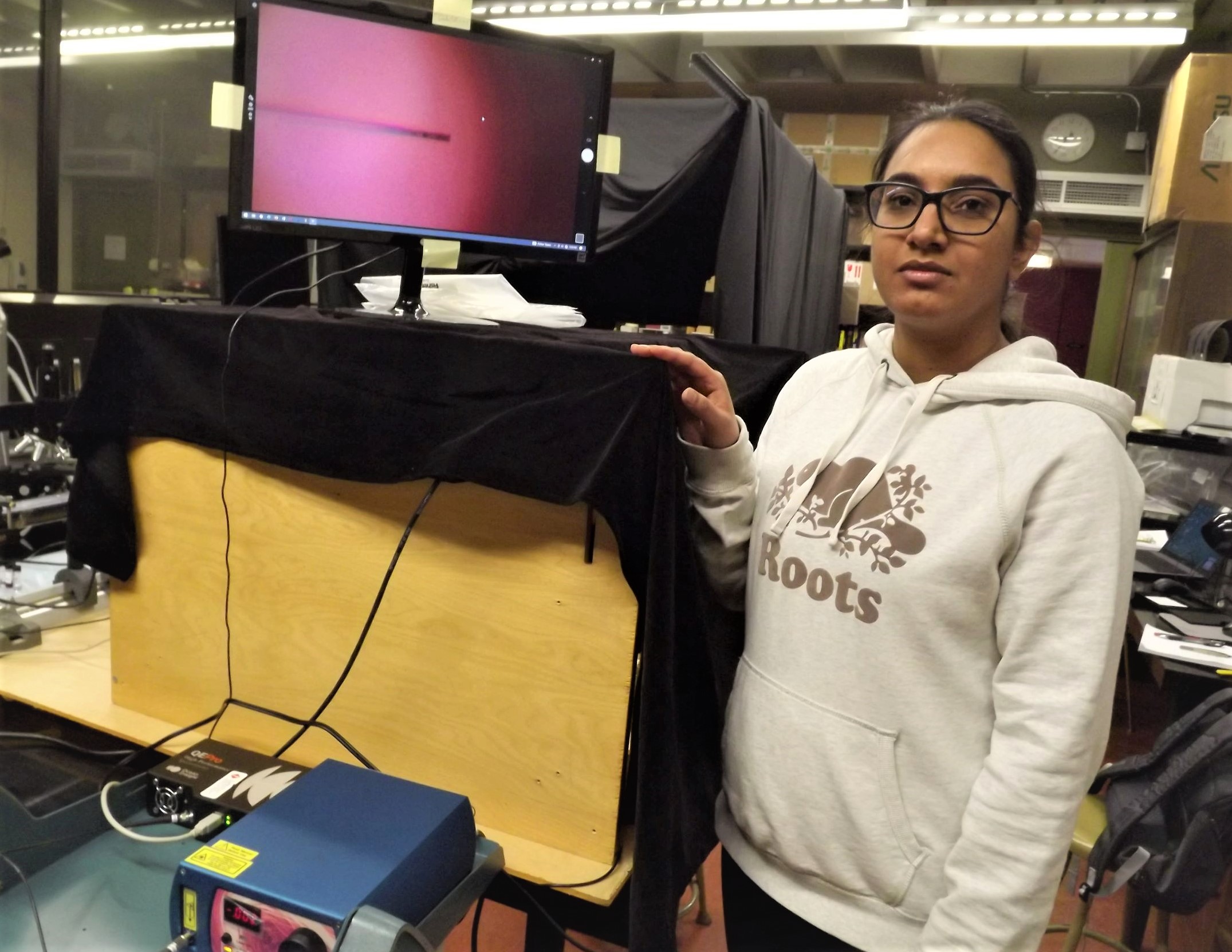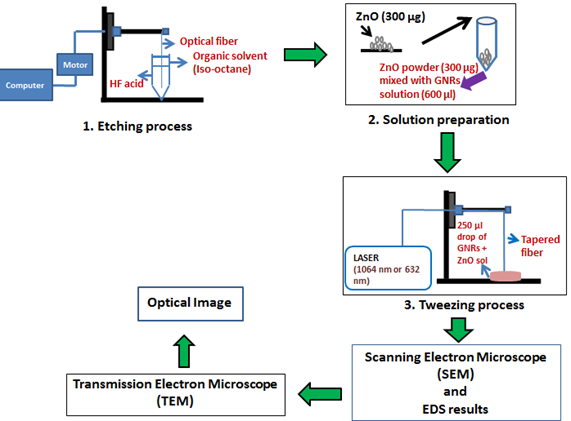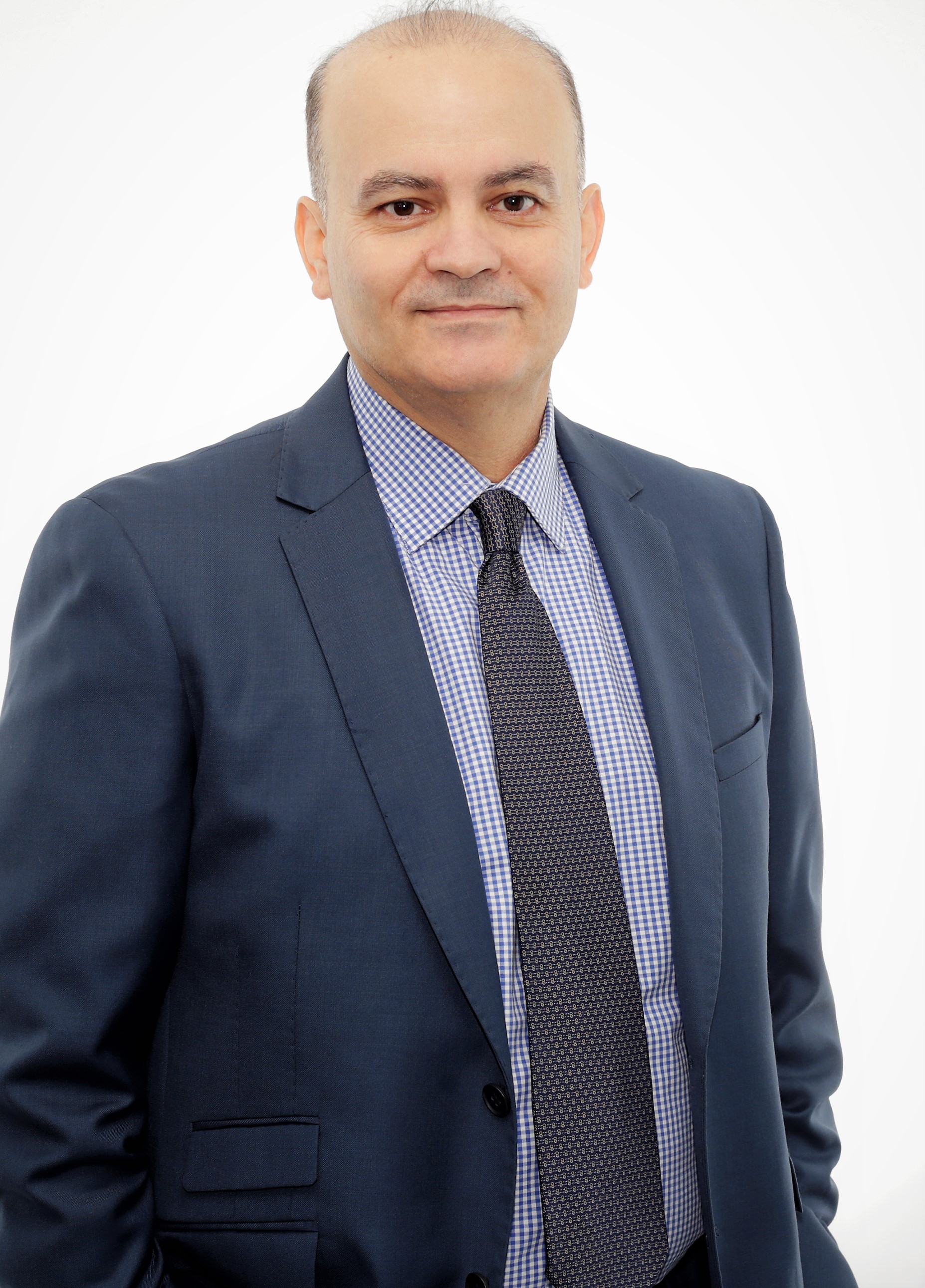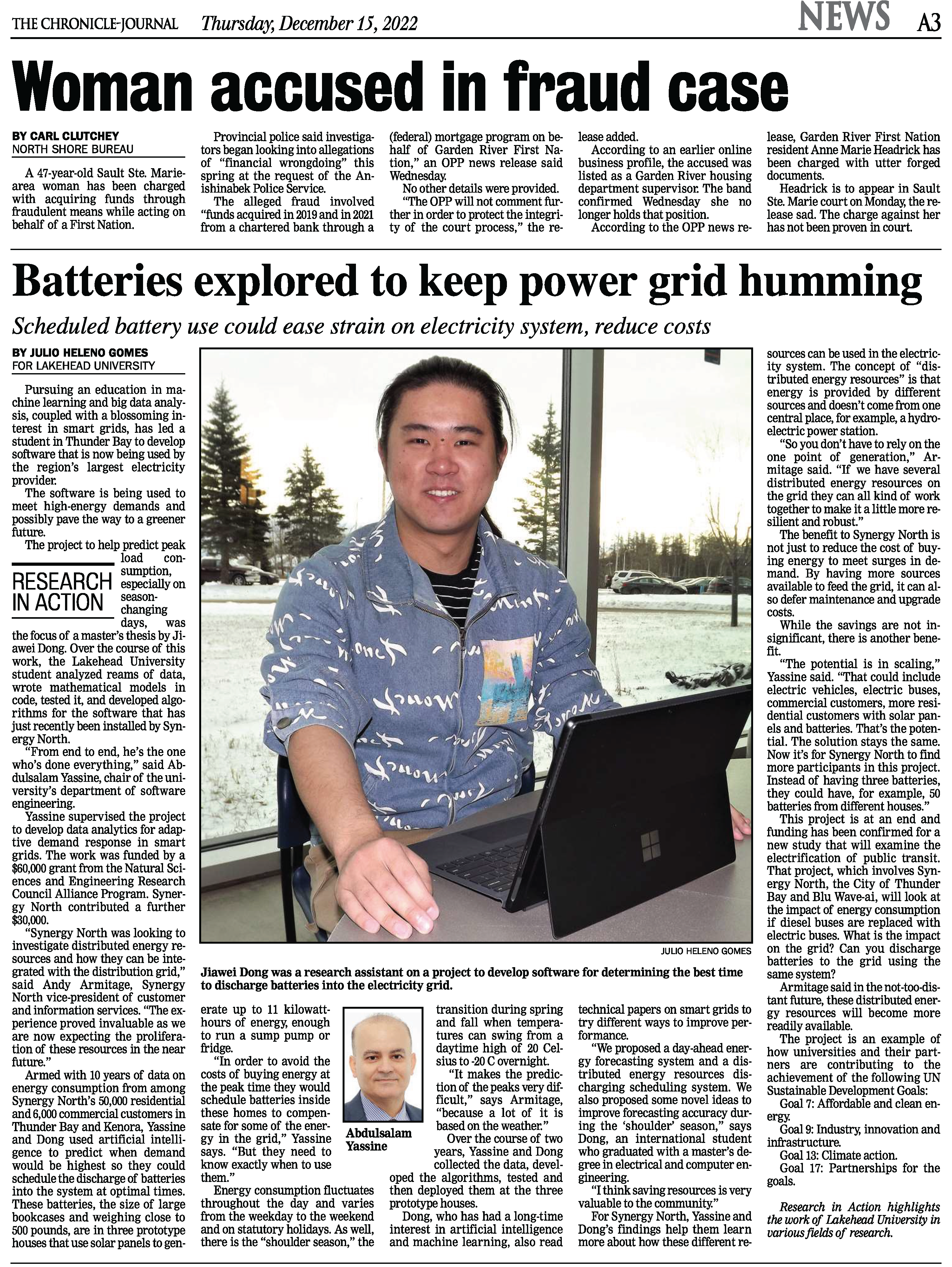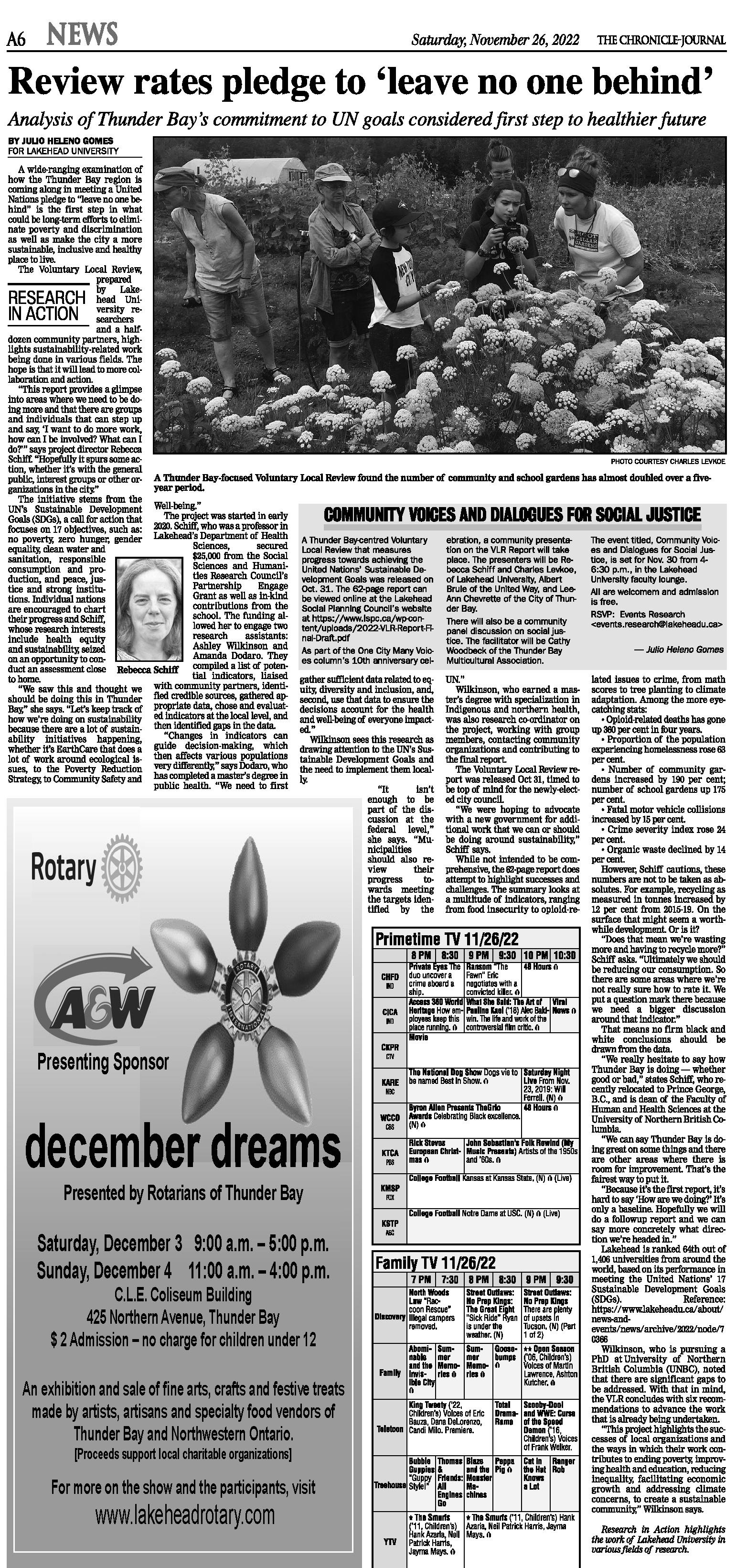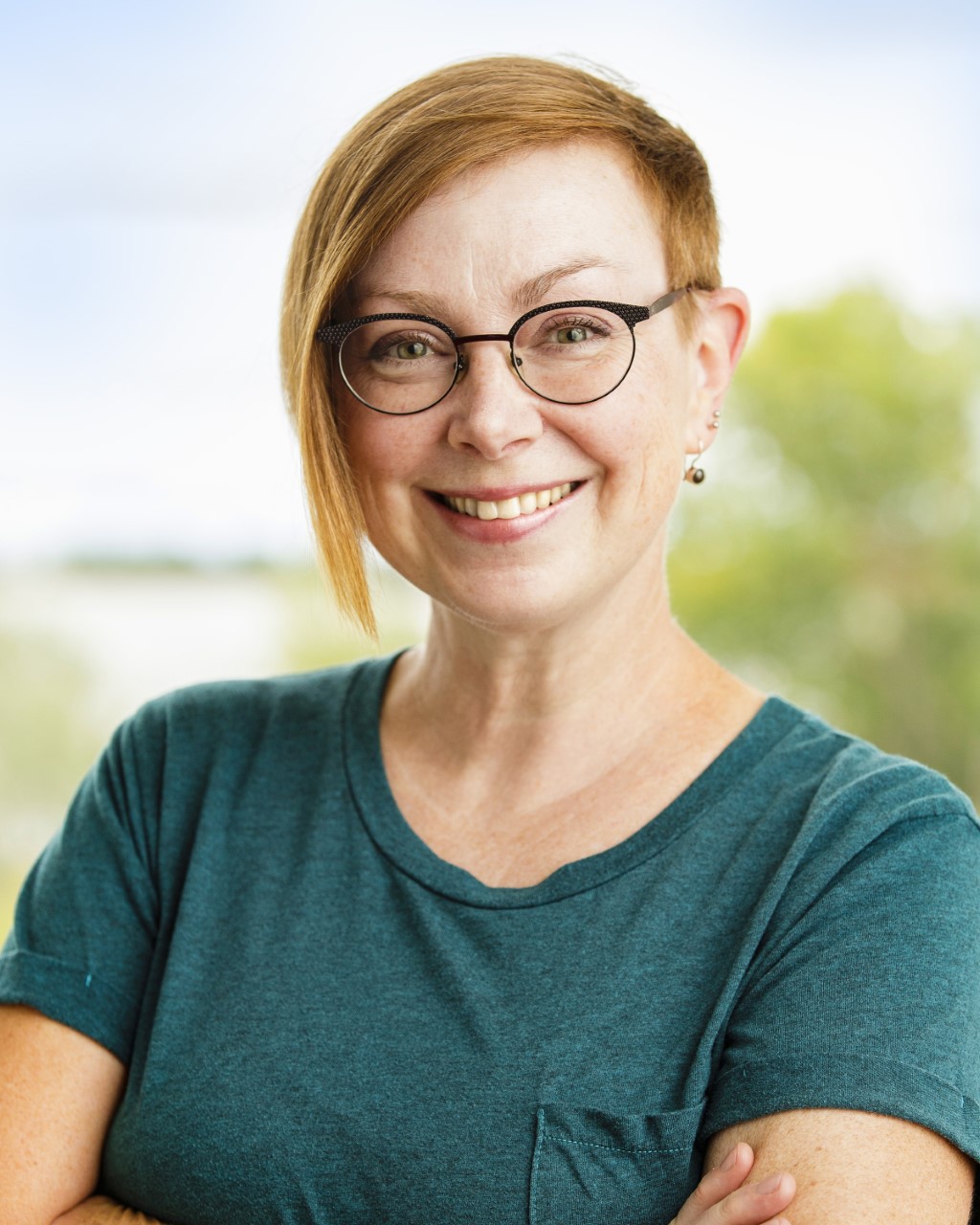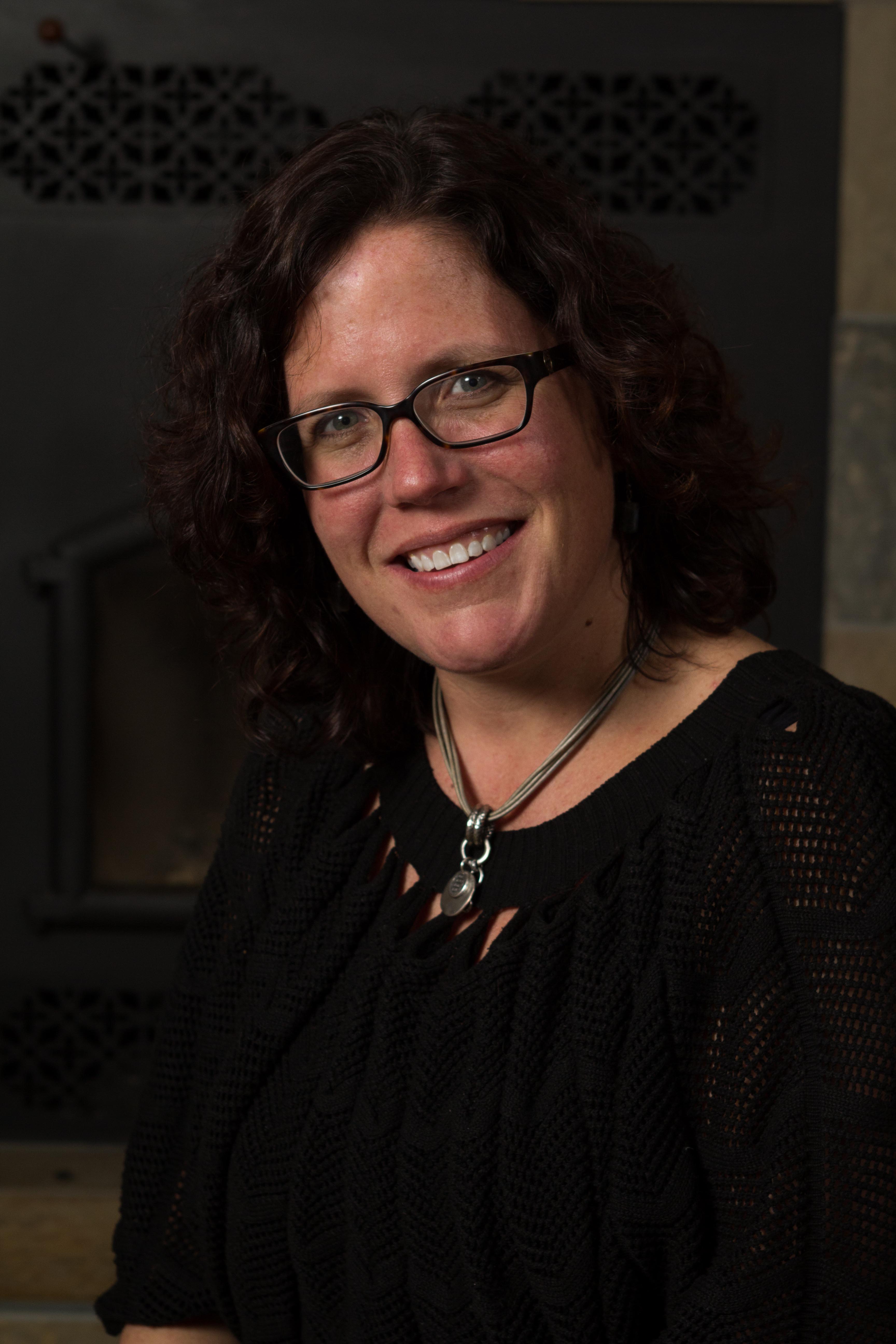Research in Action: Law reforms needed to end violence
Posted in the Chronicle Journal July 20, 2023
BY JULIO HELENO GOMES
Extensive research in eastern Canada examining gaps in how Indigenous Peoples are served by government institutions has found that violent interactions with police has made many fearful of reaching out for any kind of assistance. In the wake of fatal encounters, which often occur in non-criminal matters, questions are being asked about why this is happening and how it might be changed.
Research led by Lakehead University's Law school has determined that same concerns exist in Thunder Bay and that commonly proposed solutions have not worked.
“The problem is everywhere and it needs an everywhere solution,” says Jula Hughes, dean of the Bora Laskin Faculty of Law. “The national scope of the problem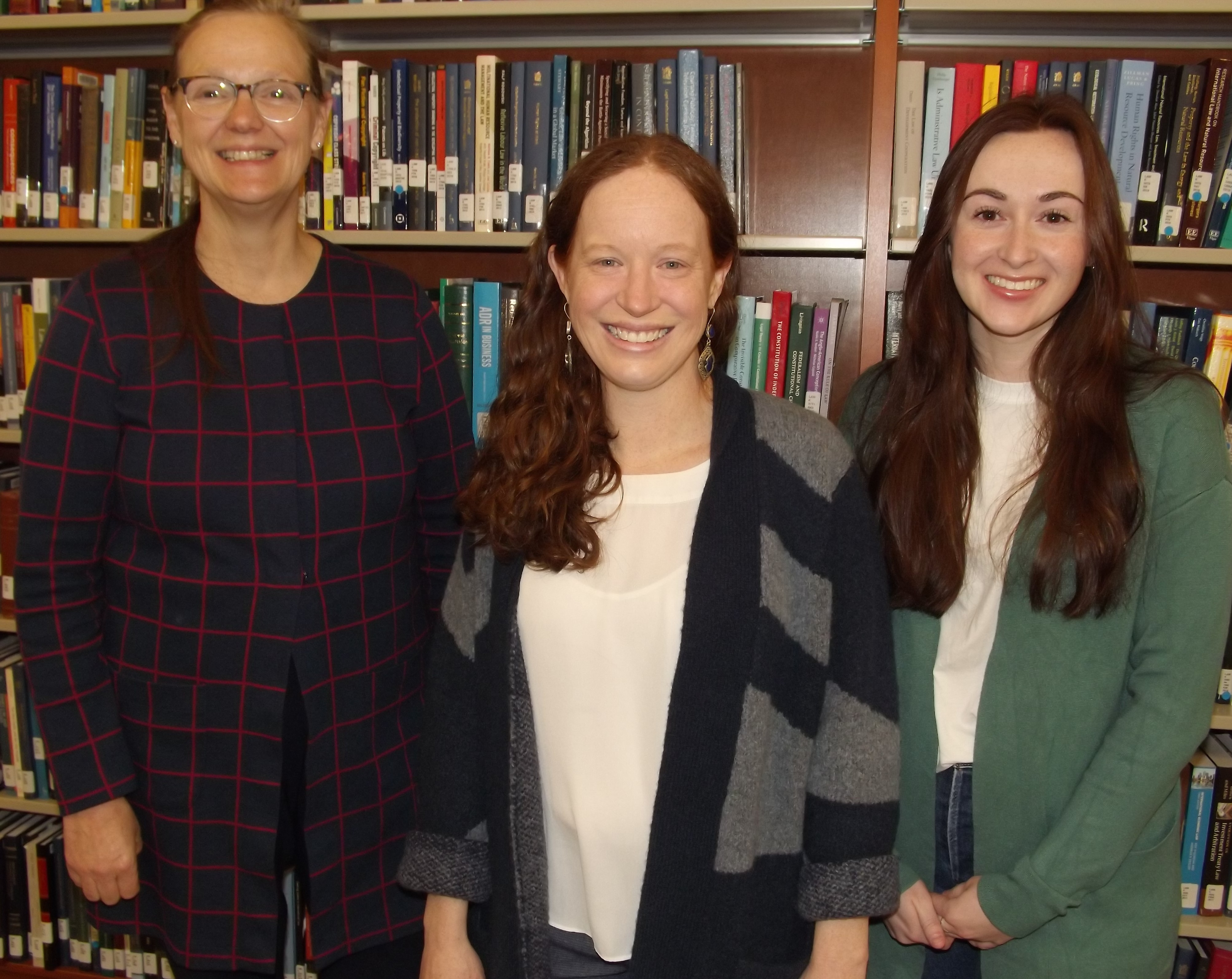 makes us think that law reform may be a component of fixing it.”
makes us think that law reform may be a component of fixing it.”
The study, titled “Killed For Our Own Good? Ending Police Violence Against Indigenous People in Need of Assistance,” included researchers from across Canada. The goal was to bring together academics and community members to address the abuses the Indigenous population suffer when they come into contact with police.
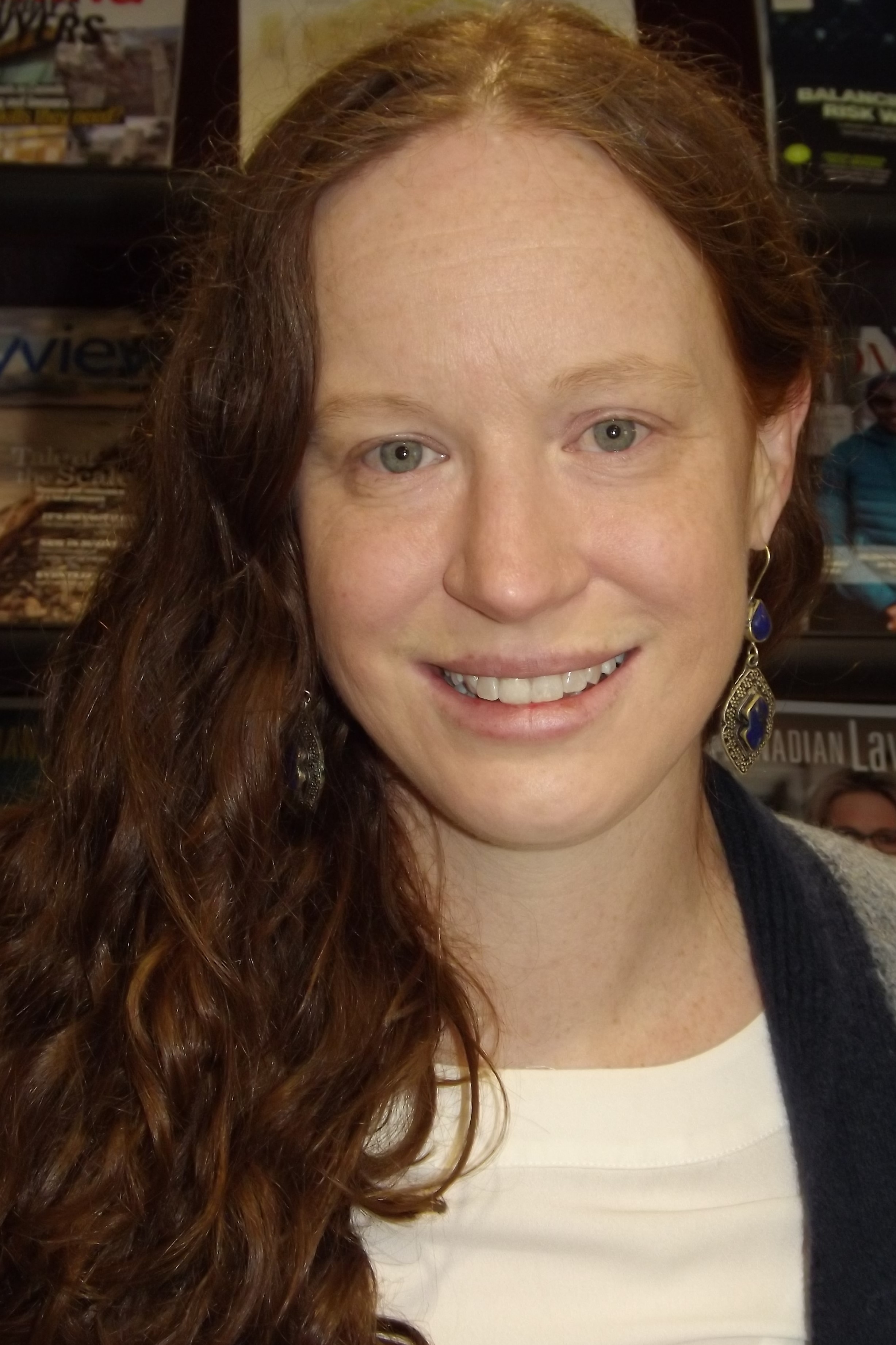 “It's a serious issue, even here in Thunder Bay, in terms of the experiences people have in this country with police and the higher level of violence that they experience relative to the general population,” says Robin Whitehead, an assistant professor in the Law faculty and the study's co-investigator with Hughes. “There's not a lot of easy solutions to this problem, but what we're trying to do in our work is look at some of the ways that the legal structures themselves contribute to that and the ways they could help to remedy the issue essentially.”
“It's a serious issue, even here in Thunder Bay, in terms of the experiences people have in this country with police and the higher level of violence that they experience relative to the general population,” says Robin Whitehead, an assistant professor in the Law faculty and the study's co-investigator with Hughes. “There's not a lot of easy solutions to this problem, but what we're trying to do in our work is look at some of the ways that the legal structures themselves contribute to that and the ways they could help to remedy the issue essentially.”
The study – funded by a grant of $49,670 from the Social Sciences and Humanities Research Council of Canada, among other sponsors – culminated with an online workshop on July 7, 2022. Participants engaged in panel discussions, talking circles and a plenary session.
Hughes, who joined Lakehead in 2019 from New Brunswick, noted that issues she had explored in Quebec and the Maritimes were mirrored elsewhere. Scholars involved in the project have noted that in regards to accountability -- whether civilian oversight of police, coroner's inquests or special commissions – many recommendations were made but they were not consistently implemented. For example: better police training, more cultural competency, and the use of multi-disciplinary response teams to provide mental health assistance for people in distress.
The research into whether these mechanisms are beneficial is not encouraging.
“Firstly, governments tend not to implement these ideas,” Hughes says. “And to the extent they are implemented, they don't seem to result in transformational change. They might make some difference, but they're not really changing the big picture. What we tried so far hasn't worked.”
A key question is: should police even attend some calls, such as a mental health crisis? Often, officers just arriving on the scene escalates the situation because of deep-seated distrust and simply because of police firearms they bring to the situation.
“Many of these altercations arise when people arm themselves with opportunistic weapons – they pick up a kitchen knife or something like that – in response to the presence of a police weapon,” Hughes says.
She notes that many police interactions involving use of force are dealing with victims of crime or providing frontline assistance, such as conducting wellness checks. In some cases, the outcomes are worse than when police are dealing with actual law-breakers.
“The criminal being chased down the street has a better chance of survival than somebody who is a mental health call,” Hughes says.
Whitehead, whose doctoral research was on police use of force against persons with mental health disabilities, says Indigenous people are over-represented in police-involved deaths across all jurisdictions. The problem is there are hundreds of police forces in Canada, each with their own reporting methods on police violence or injuries in police custody, so detailed and reliable data is hard to come by.
“No one right now can answer the question: how many people die in police-involved interactions each year?” Whitehead says. “The government doesn't know the answer. The statistics that are published federally are inaccurate.”
If the different agencies tracking this information don't release it voluntarily, the other recourse is a Freedom of Information request, which is costly and time-consuming. That is why scholars are pushing for national data collection on police interactions.
“Having good information about this gives us the tools necessary to actually improve the situation,” Whitehead says.
Second-year law student Ella Carr assisted in community outreach for the conference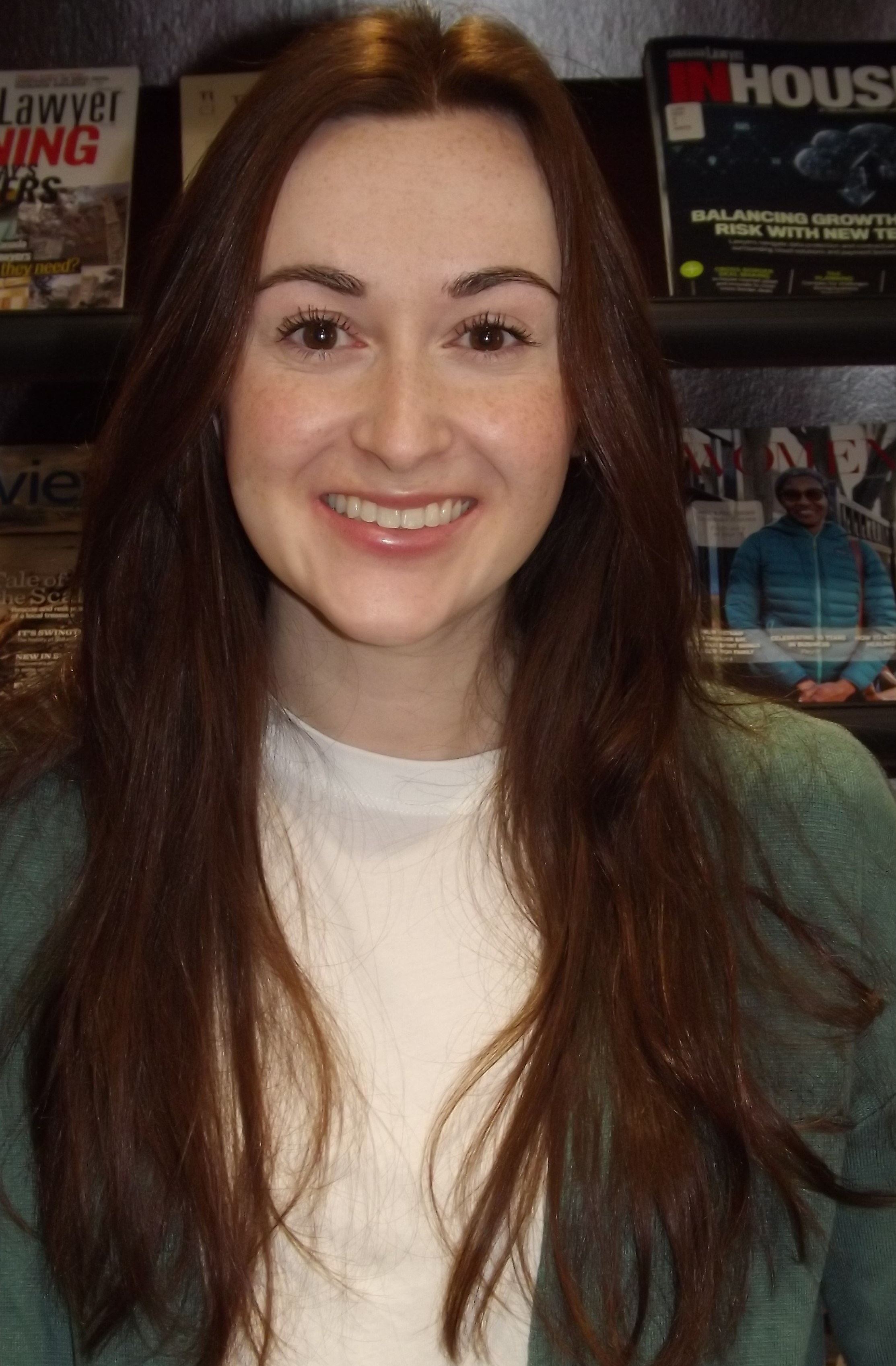 participants. The Peterborough, Ont.-native has an undergraduate degree from Laurentian University and came to Thunder Bay to focus on Indigenous law and small-town practice.
participants. The Peterborough, Ont.-native has an undergraduate degree from Laurentian University and came to Thunder Bay to focus on Indigenous law and small-town practice.
“I was drawn to justice for Indigenous peoples for many reasons,” Carr explains. “There aren't enough voices advocating to solve injustices towards Indigenous Peoples from police. I wanted to put my foot in the door to learn what and how to research while helping my community.
“Being able to recognize and act on Indigenous legal issues is pertinent to being a competent lawyer in small Northern towns.”
The report that emerged from the workshop is another step in ongoing research into police interactions with Indigenous communities. For Hughes, two issues warrant further inquiry:
in Thunder Bay, analyzing the effectiveness of mental health crisis response teams; and, the weapons policy of police services from a disability law perspective
“One of the things that's really striking in the way officers assess risk is not really informed by how people with mental health issues present,” Hughes says. “Often, people are seen to be dangerous when they really present very little risk. That's a matter of figuring out how you can describe behaviours in a way that then changes how the risk analysis is done.”
Research in Action highlights the work of Lakehead University in various fields of research.
-- 30 --
Photo 1 - Lakehead University professor Jula Hughes, Dean of the Bora Laskin Faculty of Law, is seen with assistant professor Robin Whitehead, centre, and second-year law student Ella Carr.
Photo 2 - Robin Whitehead is an assistant professor at the Bora Laskin Faculty of Law.
Photo 3 - Ella Carr is a student in the Bora Laskin Faculty of Law.
Julio Heleno Gomes photos


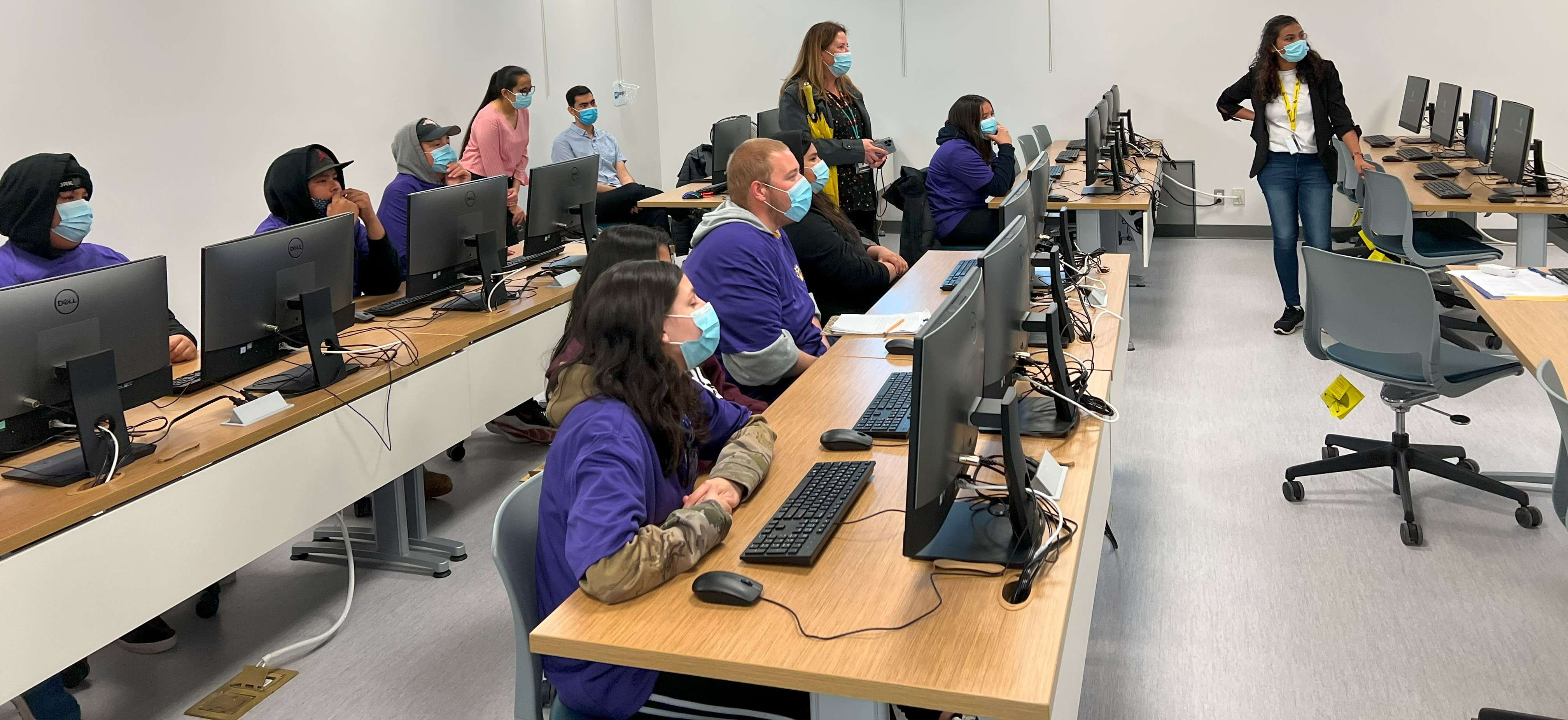 required in other fields. This will help the students to understand and equip themselves with in-demand skills and give them equal opportunities in the job market in the future.”
required in other fields. This will help the students to understand and equip themselves with in-demand skills and give them equal opportunities in the job market in the future.”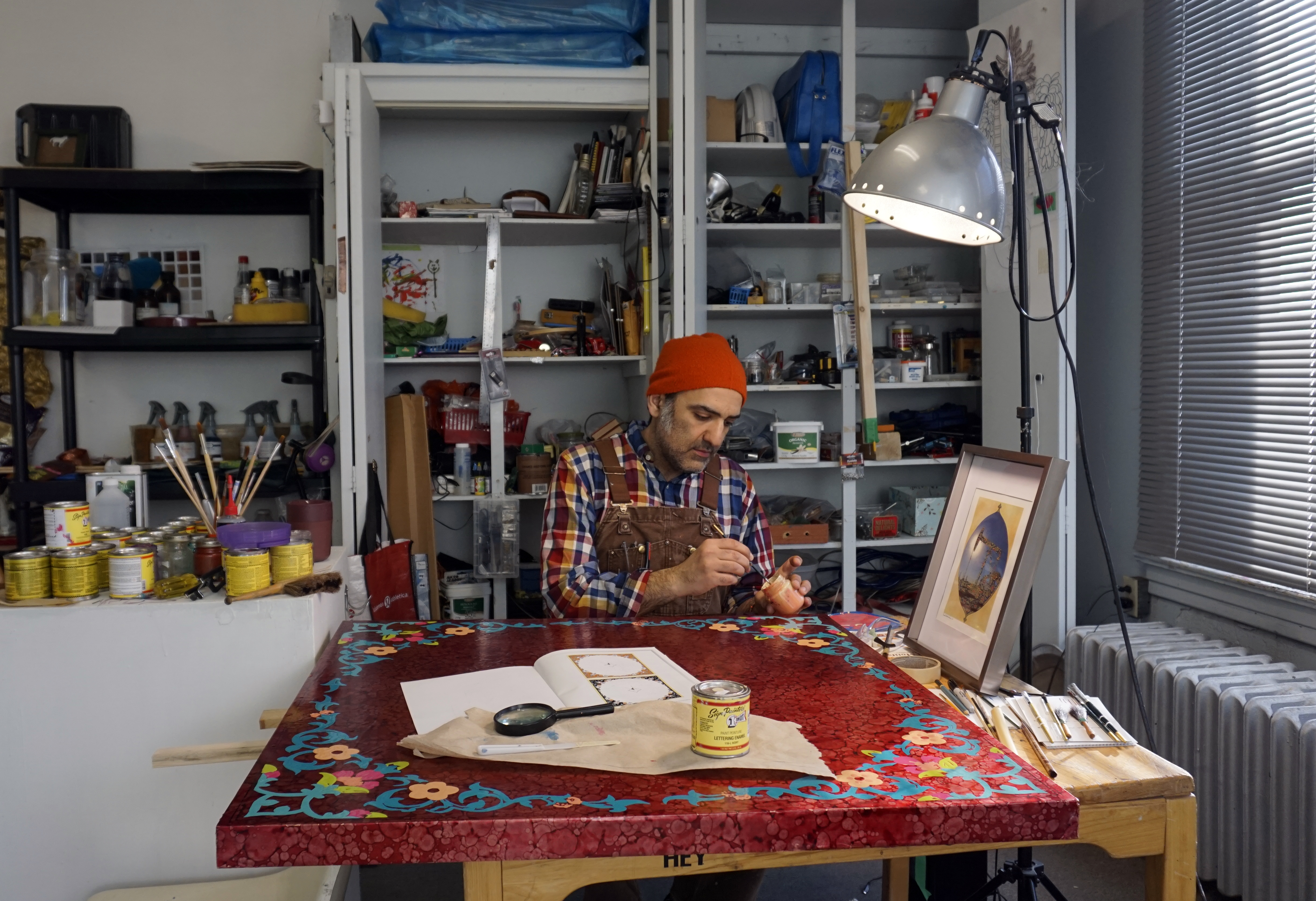

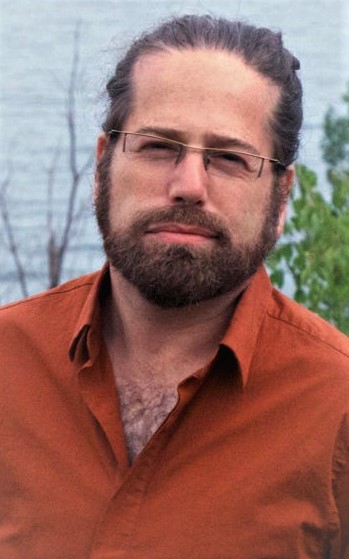
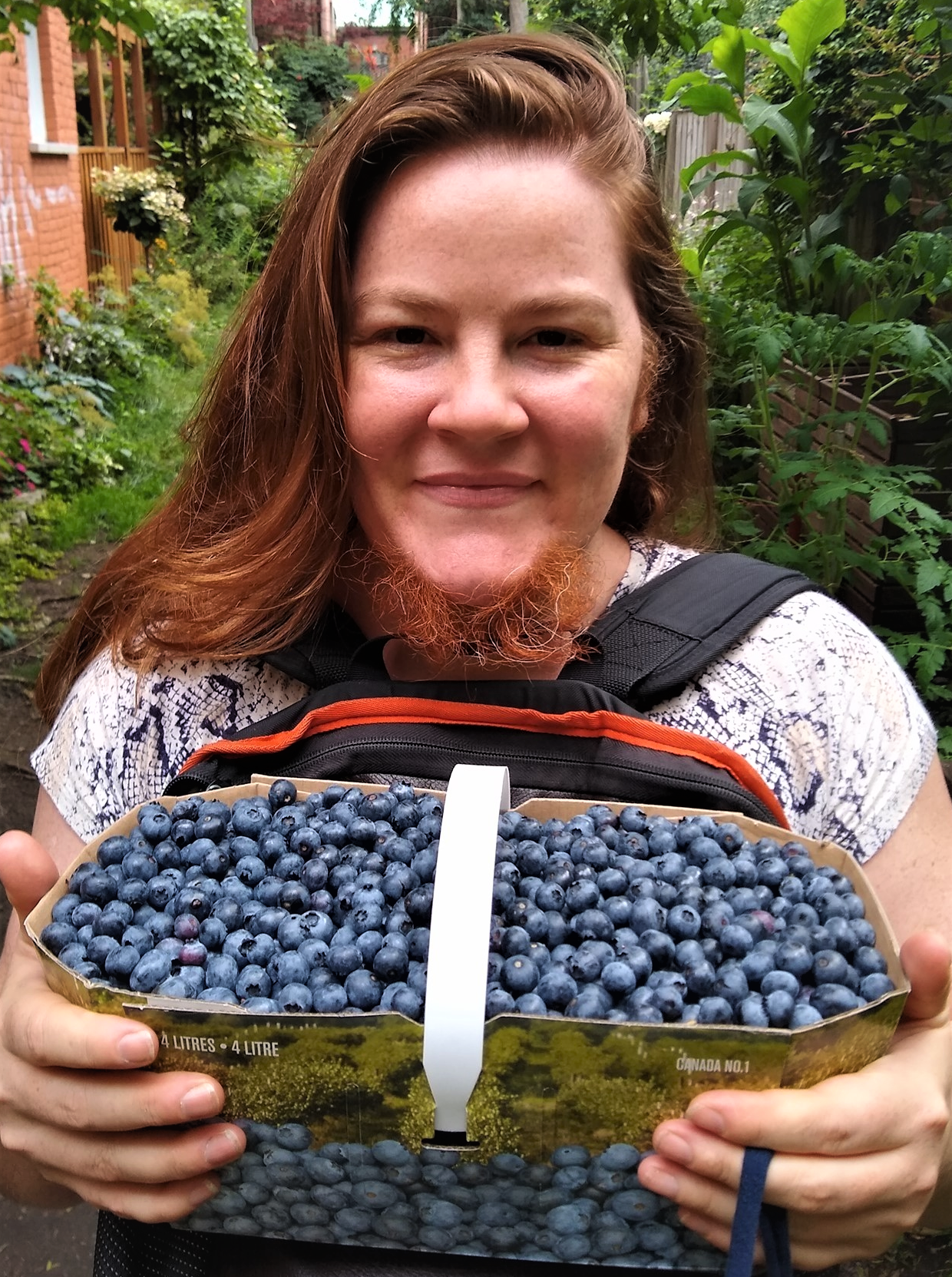 “The first time Max showed me CLUE-ANON – before it even had a name -- I knew he was onto something. We played a few rounds and discussed it late into the night. That is a big part of the reason I enrolled at Lakehead,” adds Lawson, whom Haiven credits with devising the name.
“The first time Max showed me CLUE-ANON – before it even had a name -- I knew he was onto something. We played a few rounds and discussed it late into the night. That is a big part of the reason I enrolled at Lakehead,” adds Lawson, whom Haiven credits with devising the name.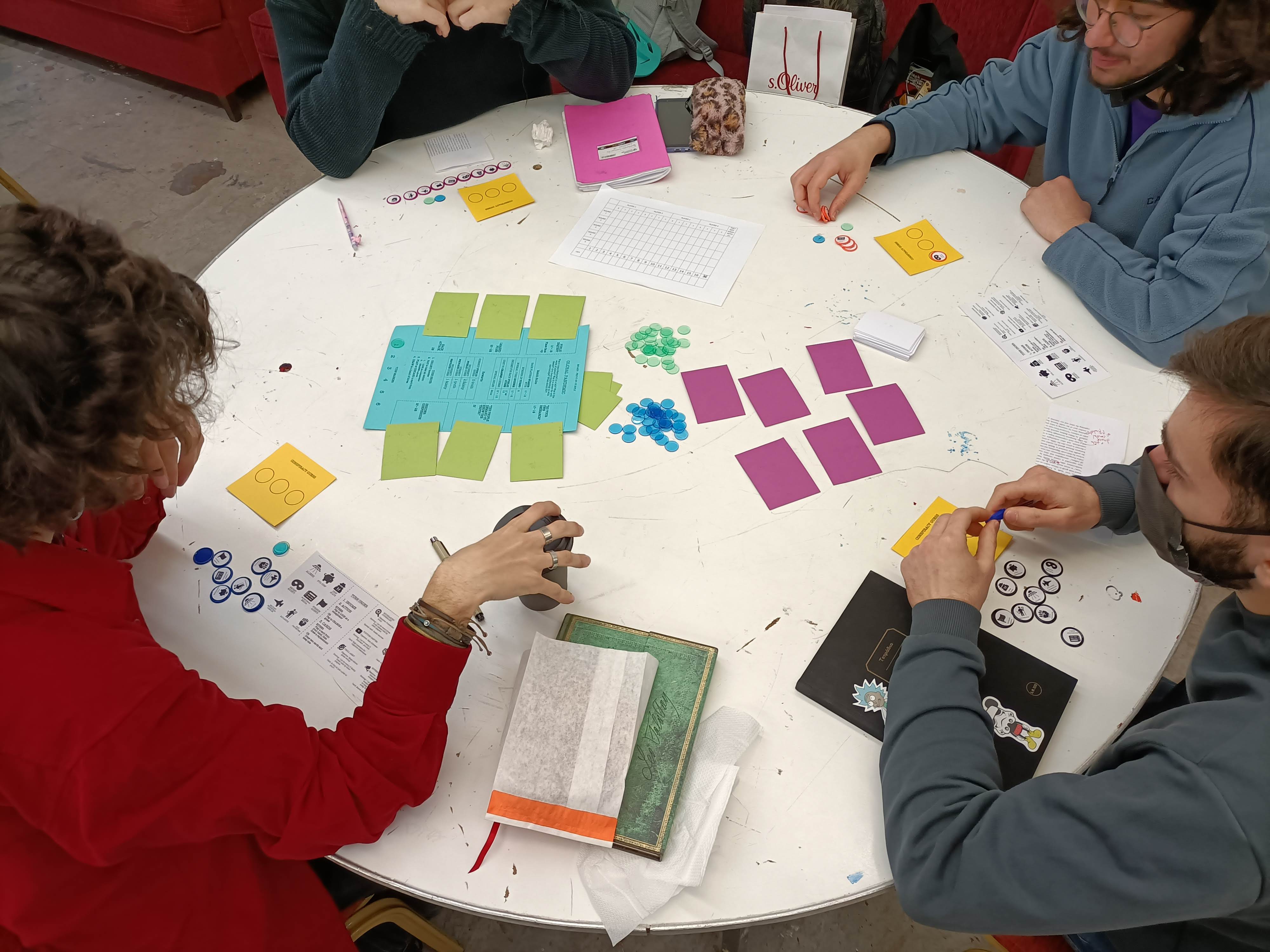
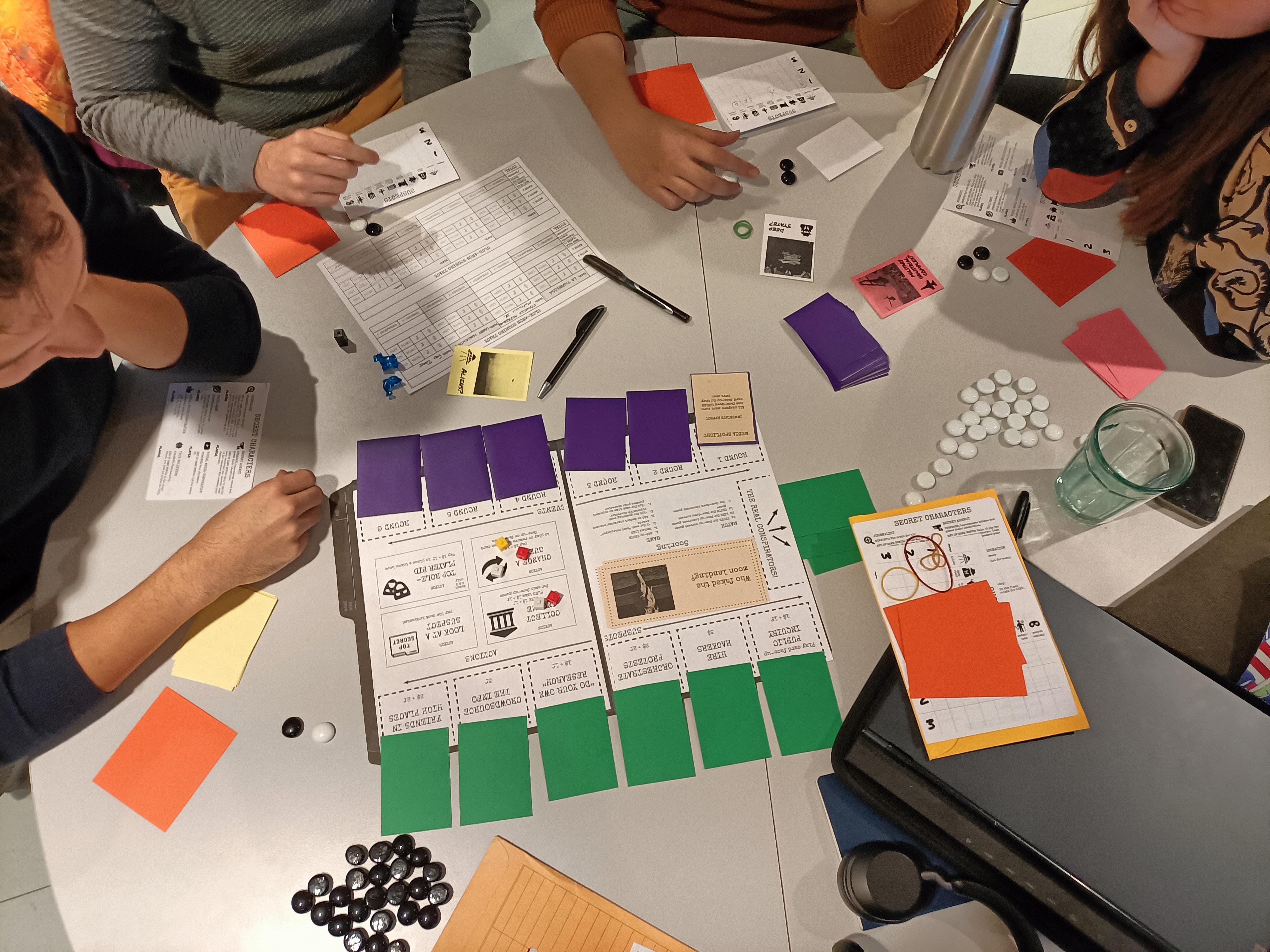
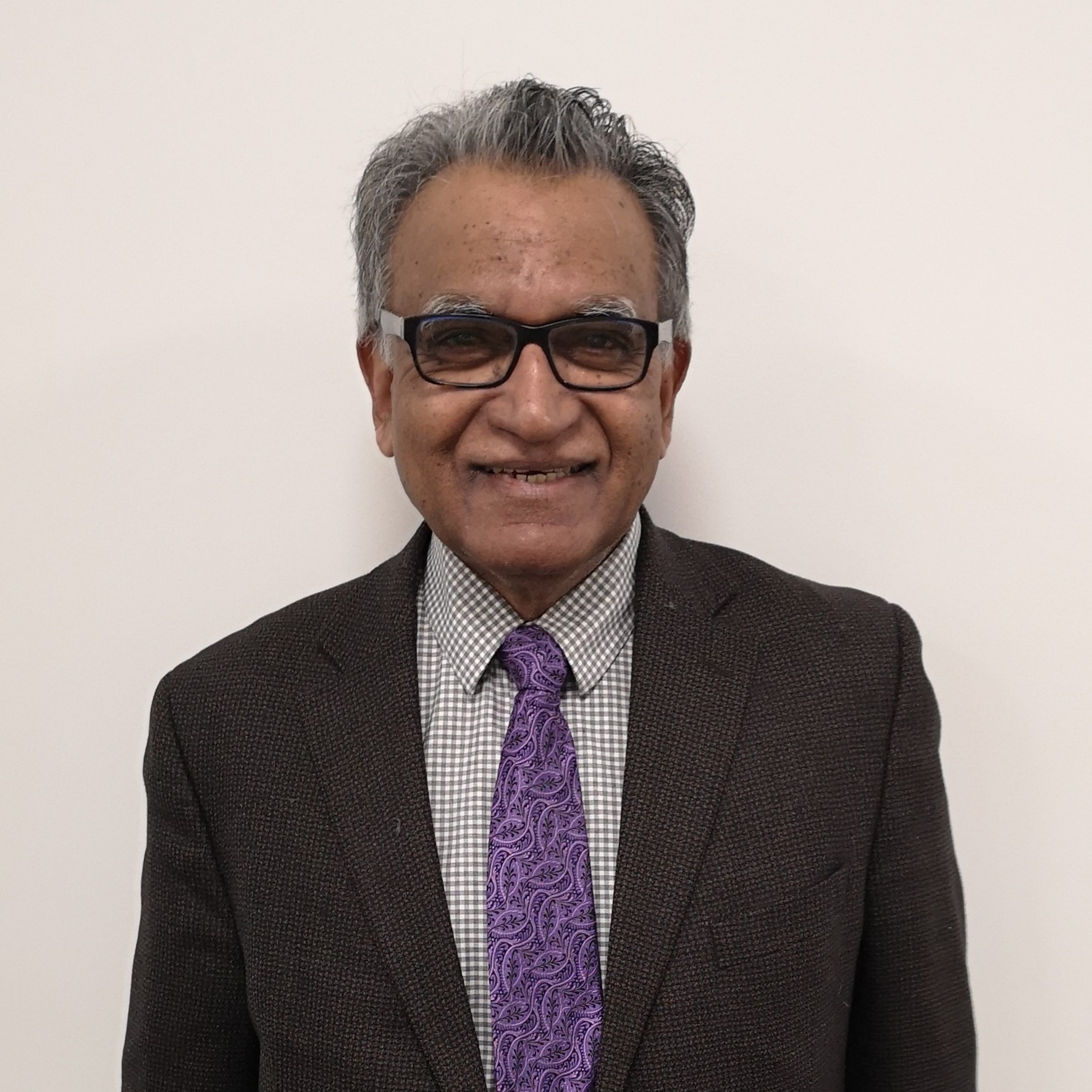
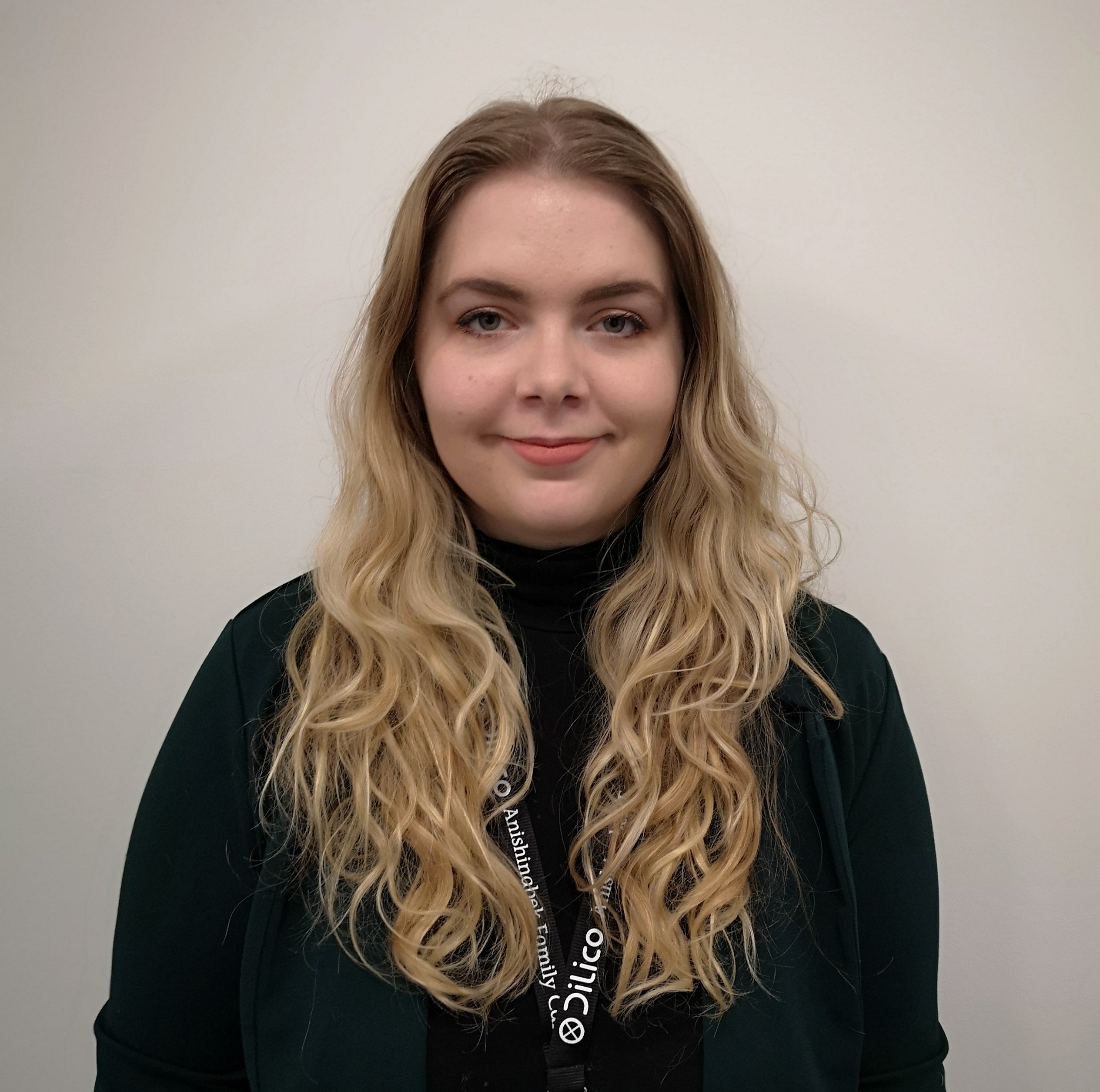 Puiras helped put together training materials for Dilico Anishinabek Family Care. This year-long collaboration involves a whole organizational approach to embed the strength-based philosophy into the services Dilico provides. Rawana and Puiras have led multiple sessions for management and staff.
Puiras helped put together training materials for Dilico Anishinabek Family Care. This year-long collaboration involves a whole organizational approach to embed the strength-based philosophy into the services Dilico provides. Rawana and Puiras have led multiple sessions for management and staff.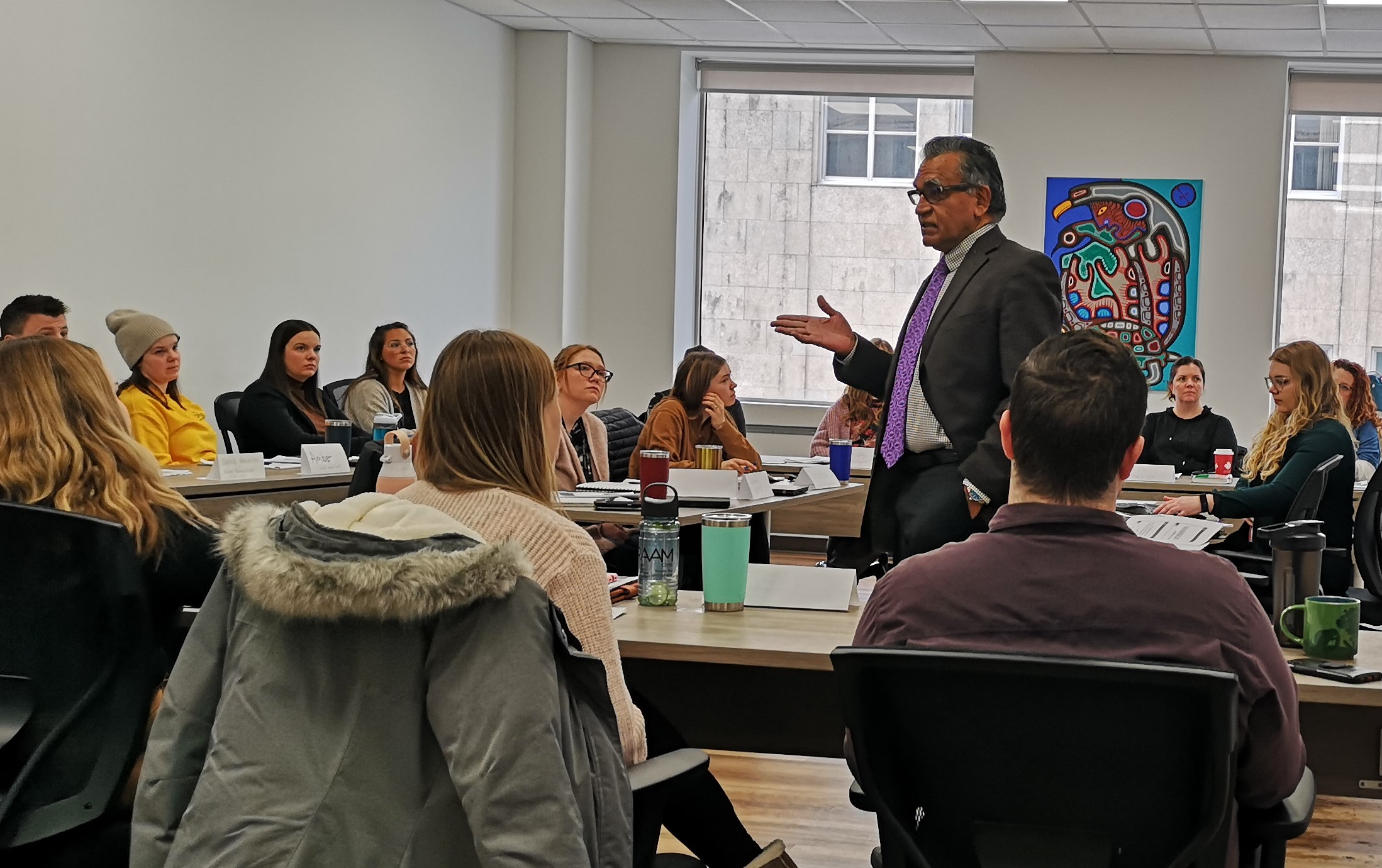
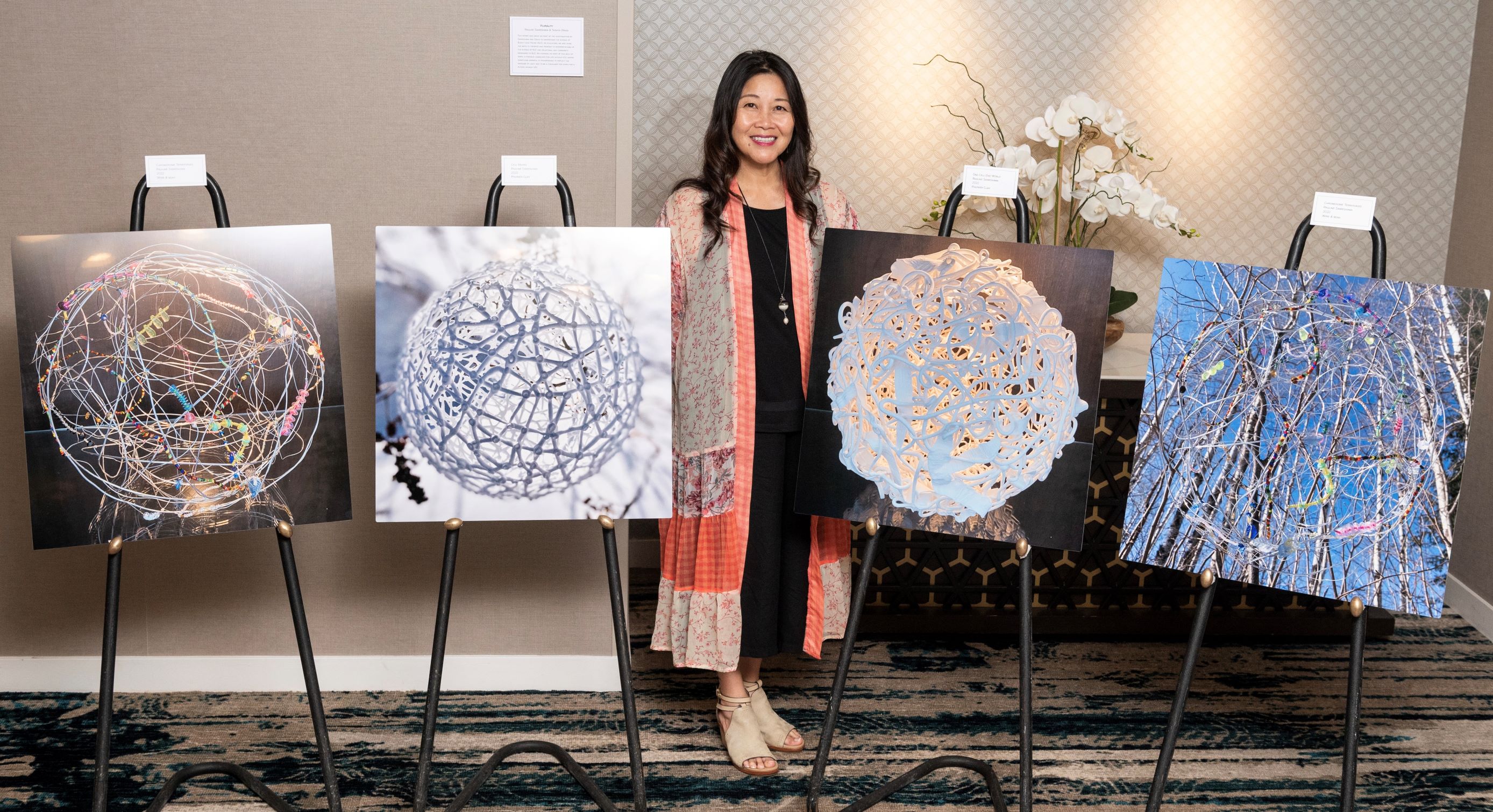
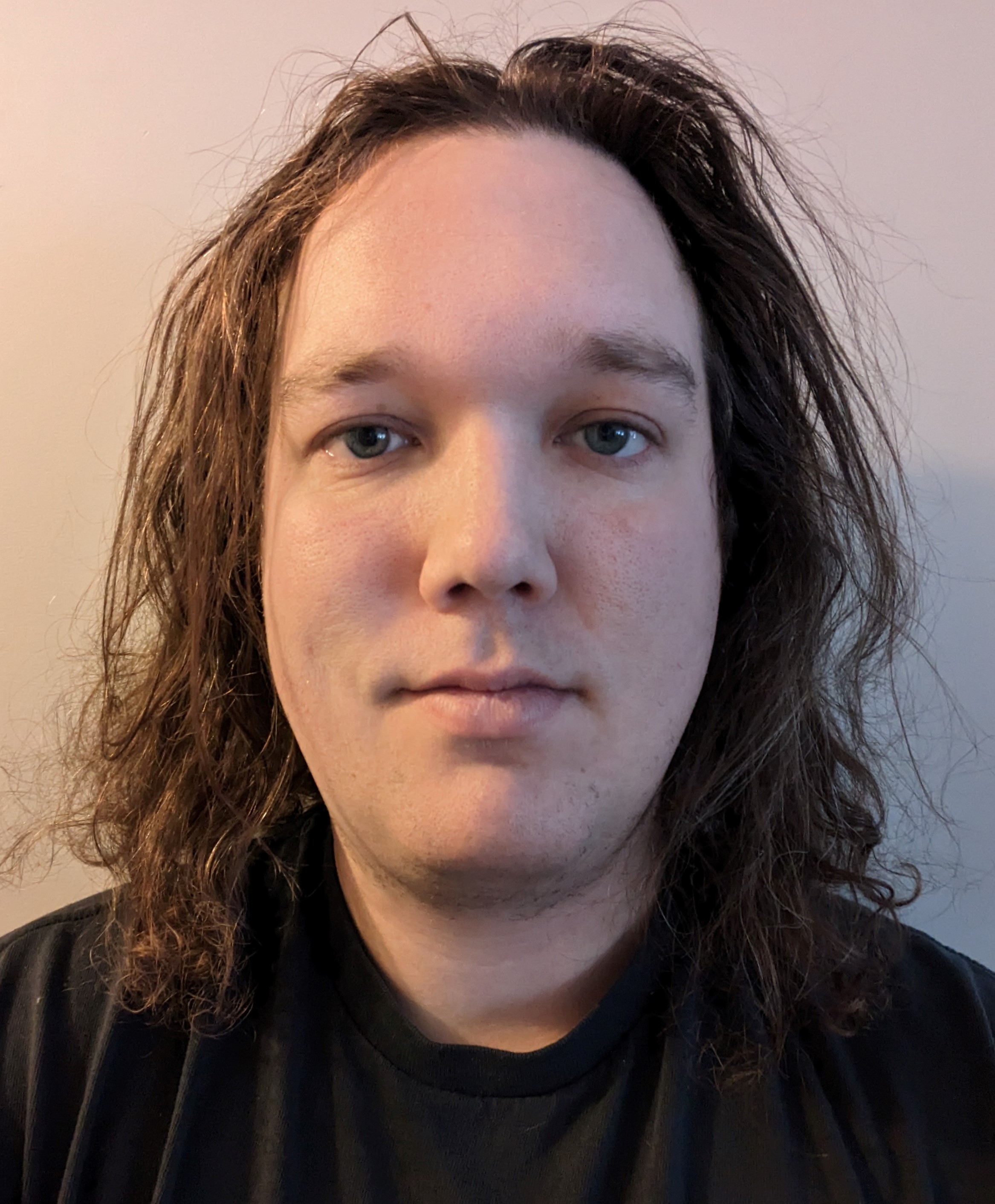 The heart of the system is an optical fiber-based probe. This system is envisioned as a multi-purpose tool that can be used for various tasks, from checking if crops are ready to harvest, to detecting pollutants in lakes and rivers, even diagnosing diseases such as cancer and COVID-19.
The heart of the system is an optical fiber-based probe. This system is envisioned as a multi-purpose tool that can be used for various tasks, from checking if crops are ready to harvest, to detecting pollutants in lakes and rivers, even diagnosing diseases such as cancer and COVID-19.